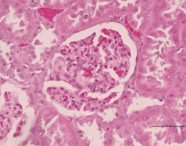Safety Profile of Aqueous Extract from Traditional Recipes in the Royal Textbook of King Rama V in Albino Wistar Rats
Main Article Content
Abstract
An assessment was conducted on the acute toxicity of an aqueous extract derived from King Rama V's Royal Handbook antidiabetic herbal formula in albino Wistar rats. The extract is composed of six medicinal plants from Thailand. The OECD guidelines specified doses of 5, 50, 300, and 2,000 mg/kg of aqueous extract, with the control group receiving distilled water. Both male and female rats received a single dose and were monitored daily for a period of 14 days. Body weights were recorded during Weeks 0, 1, and 2. Following the studies, we documented the weights of internal organs. Blood biochemistry, including BUN, Cr, AST, ALT, ALP, TG, TC, and HDL, along with liver and kidney histology and hematological parameters such as RBC, Hb, Hct, PLT, MCV, MCH, MCHC, WBC, lymphocytes, and monocytes, were thoroughly examined. The results indicated that there were no fatalities among the rats over a 14-day period and that none of the administered doses of the formulation produced any signs or symptoms of toxicity within the initial 24 hours. All treatments lead to significant weight gain (p<0.05) in rats while not impacting organ weights. The extract did not adversely affect hematological parameters or the morphology of blood cells. Treatment at 300 and 2,000 mg/kg significantly influenced blood biochemical parameters, including AST, ALT, and ALP levels (P<0.05). However, these levels were within acceptable ranges. A close look at tissue sections under a microscope showed that the liver and kidneys had the same histology as the negative control group.
Downloads
Article Details
Section

This work is licensed under a Creative Commons Attribution-NonCommercial-NoDerivatives 4.0 International License.
How to Cite
References
Jansen C, Baker JD, Kodaira E, Ang L, Bacani AJ, Aldan JT, Shimoda LMN, Salameh M, Small-Howard AL, Stokes AJ, Turner H, Adra CN. Medicine in motion: Opportunities, challenges and data analytics-based solutions for traditional medicine integration into western medical practice. J Ethnopharmacol. 2021; 267: 113477.
Trerattanathawan S, Katisart T, Konsue A. In vitro antioxidation, α-glucosidase, and α-amylase inhibitory activities of different solvent extracts of Thai traditional diabetic medicine. Trop J Nat Prod Res. 2023; 7(10), 4146-4151.
Codex General Standard for Food Additives (GSFA) online database, Available at: http://www.fao.org/fao-who-codexalimentarius/codex-texts/dbs/gsfa/en, accessed on April 2024.
Lan HY, Zhao B, Shen YL, Li XQ, Wang SJ, Zhang LJ, Zhang H. Phytochemistry, Pharmacological Activities, Toxicity and Clinical Application of Momordica cochinchinensis. Curr Pharm Des. 2019; 25(6): 715-728. Doi: 10.2174/1381612825666190329123436. PMID: 30931848.
Nutmakul, T. Phytochemical and pharmacological activity of Tiliacora triandra (Colebr.) Diels. Songklanakarin J Sci Technol. 2021; 43(5): 1264-1274.
Das G, Gouda S, Kerry R G, Cortes H, Prado-Audelo M L D, Leyva-Gomez G, Patra J K. Study of traditional uses, extraction procedures, phytochemical constituents, and pharmacological properties of Tiliacora triandra. J Chem. 2022; (1), 8754528. doi.org/10.1155/2022/8754528
Pasachan T, Duangjai A, Ontawong A, Amornlerdpison D, Jinakote M, Phatsara M, Soodvilai S, Srimaroeng, C. Tiliacora triandra (Colebr.) diels leaf aqueous extract inhibits hepatic glucose production in HepG2 cells and type 2 diabetic rats. Molecules. 2021; 26(5), 1239. doi.org/10.3390/molecules26051239
Padma R, Parvathy NG, Renjith V, Kalpana PR, Rahate P. Quantitative estimation of tannins, phenols and antioxidant activity of methanolic extract of Imperata cylindrica. Int J Res Pharm Sci.. 2013; 4(1): 73-77.
Nayim P, Mbaveng A T, Sudhir K, Wamba B E, Sanjukta M, Kuete V. Phytochemistry and pharmacology of Imperata cylindrica: A comprehensive review. Investig Med Chem Pharmacol. 2023; 6(1). 00076; doi: https://dx.doi.org/10.31183/imcp.2023.00076
Koh KH, Tham FY. Screening of traditional Chinese medicinal plants for quorum-sensing inhibitors activity. J Microbiol Immunol Infect. 2011; 44(2): 144-148.
Zeng J, Liu X, Li X, Zheng Y, Liu B, Xiao Y. Daucosterol inhibits the proliferation, migration, and invasion of hepatocellular carcinoma cells via Wnt/beta-catenin signaling. Molecules. 2017; 22(6): 862.
Zhou XR, Wang JH, Jiang B, Shang J, Zhao CQ. A study of extraction process and in vitro antioxidant activity of total phenols from Rhizoma Imperatae. Afr J Trad Compl Altern Med. 2013; 10(4): 175-178.
Yin YS, Ou J, Wei JZ, Li YQ, Li XL, Li QC, Li KH. Effects of Rhizoma Imperatae and its compound decoction on the model of IgA nephropathy in rats. Lishizhen Med Materia Med Res. 2011; 11: 2659-2662.
Maneenoon K, Khuniad C, Teanuan Y, Saedan N, Prom-In S, Rukleng N, Kongpool W, Pinsook P, Wongwiwat W. Ethnomedicinal plants used by traditional healers in Phatthalung Province, Peninsular Thailand. Ethnobiol Ethnomed. 2015; 11: 43.
Bopana N, Saxena S. Asparagus racemosus - ethnopharmacological evaluation and conservation needs. J Ethnopharmacol. 2007; 110(1): 1-15.
Khare CP. Indian medicinal plants: An illustrated dictionary. Springer, Heidelberg, Germany; 2008. 72-73 p.
Gupta A, SR Chaphalka SR. Assessment of immunomodulatory activity of aqueous extract of Calamus rotang. Avicenna J Phytomed. 2017; 7(3): 199-205.
Katisart T, Butkhup L, Sumalee A, Taepongsorat L, Konsue A. Acute Toxicity of Aqueous Extract of a Diabetic Folklore Recipe Thai Traditional Medicine in Rats. Trop J Nat Prod Res. 2023; 7(6): 3168-3176. Doi.org/10.26538/tjnpr/v7i6.16
Othman F A, Mat Zin A A, Zakaria Y, Nik Salleh N N H, Mohd Satar A, Tan S C. Pre-clinical acute oral toxicity and subacute neurotoxicity risk assessments on sprague dawley rats treated with single dose or repeated doses of flavonoid-enriched fraction extracted from Oroxylum indicum leaves. Drug Chem Toxicol. 2025; 1-17. https://doi.org/10.1080/01480545.2024.2449210
Maneechai S, Konsue A, Katisart T. Assessment of Oral Acute Toxicity of Thai Dendrophthoe pentandra (L.) Miq. Leaf Extracts in Wistar Rats. Trop J Nat Prod Res.2023; 7(3): 2558-2565. Doi.org/10.26538/tjnpr/v7i3.15




